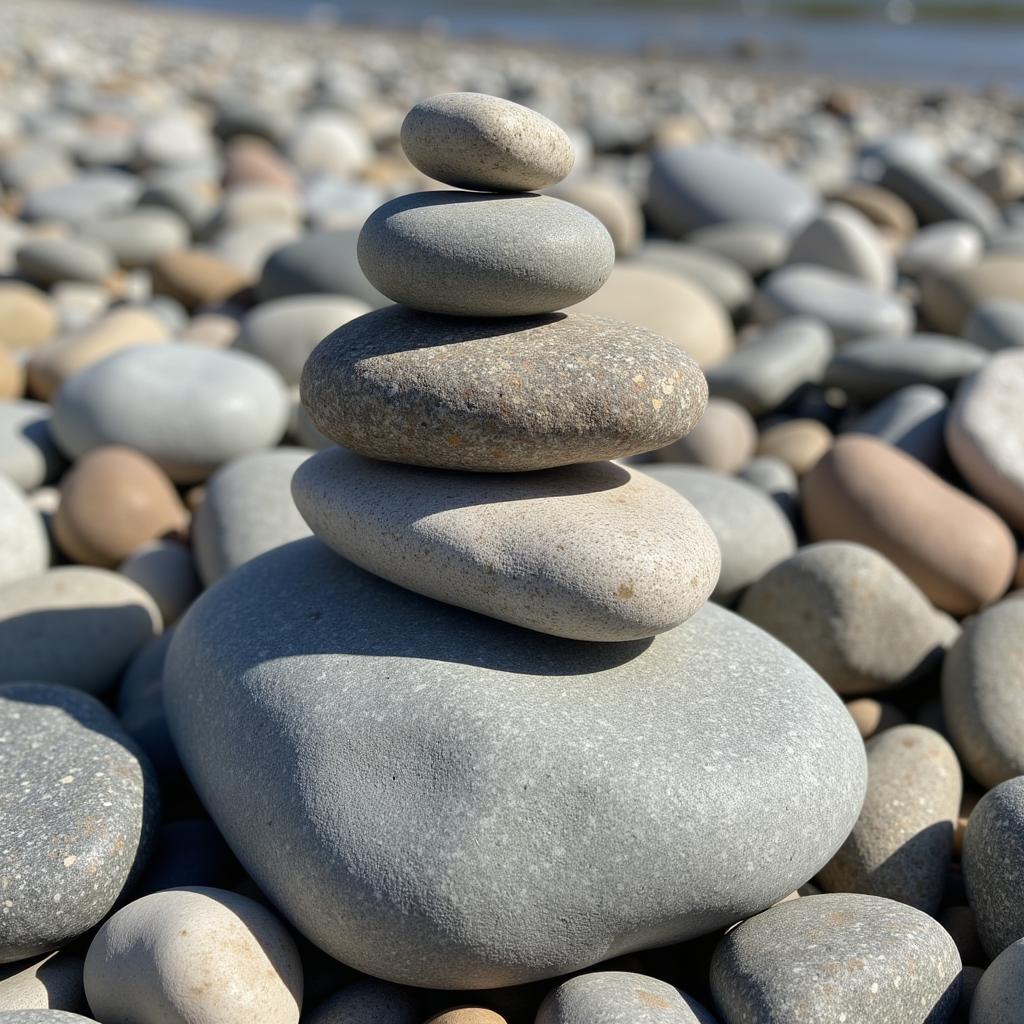Creating Stunning Rock Beach Art: A Beginner’s Guide
Rock Beach Art, also known as rock balancing or stone stacking, is a mesmerizing art form that transforms natural materials into stunning sculptures. It involves carefully balancing rocks of various shapes and sizes on top of each other, defying gravity and creating a sense of wonder. Whether you’re a seasoned artist or a curious beginner, this guide will equip you with the knowledge and inspiration to create your own rock beach art masterpieces.
Understanding the Basics of Rock Beach Art
Before embarking on your rock balancing journey, it’s essential to grasp the fundamental principles that govern this unique art form. Unlike traditional sculpting, rock beach art relies solely on the weight and friction between stones to maintain stability.
Finding the Perfect Rocks
 Smooth Beach Rocks in Various Sizes
Smooth Beach Rocks in Various Sizes
The key to successful rock balancing lies in selecting the right rocks. Opt for stones with flat, even surfaces that provide maximum contact area for balancing. Smooth, rounded rocks found near water bodies are often ideal, as their weathered surfaces enhance friction. Experiment with different shapes and sizes to discover the unique characteristics of each stone.
Mastering the Art of Balance
Finding the center of gravity for each rock is crucial for achieving stability. Begin by placing your base rock on a firm, level surface. Then, carefully position the next rock on top, experimenting with different angles and pressure points until you find the balance point. Remember, even the slightest shift can alter the equilibrium, so patience and a steady hand are essential.
Exploring Different Rock Balancing Techniques
Rock beach art encompasses a wide array of techniques, each yielding distinct aesthetic qualities. Here are a few popular methods to get you started:
1. The Classic Stack
The classic stack involves vertically arranging rocks, with each stone progressively smaller than the one below it. This technique emphasizes height and symmetry, creating a sense of upward momentum.
2. The Counterbalance
As the name suggests, this technique involves balancing rocks in a way that seems to defy gravity. It requires a keen understanding of weight distribution and leverage.
3. The Arch
Creating an arch involves carefully placing rocks to form a semi-circle. This technique adds an element of architectural elegance to your creations.
Tips and Tricks for Rock Beach Artists
- Start Simple: Begin with basic stacks and gradually experiment with more complex techniques as you gain confidence.
- Embrace Imperfection: Rock balancing is an organic art form, so don’t be afraid to embrace imperfections and asymmetry.
- Respect the Environment: When practicing rock beach art, ensure you leave the environment undisturbed. Avoid displacing living organisms or damaging natural formations.
The Beauty of Ephemeral Art
Rock beach art is a transient art form, subject to the whims of nature. Wind, rain, or even a gentle tide can dismantle your creations in an instant. However, this impermanence is part of its allure, reminding us of the ever-changing nature of our surroundings.
“Ormond Beach Art in the Park often features ephemeral art installations, reminding us of the beauty in fleeting moments,” says renowned environmental artist, Anya Sharma.
Conclusion
Rock beach art offers a unique and rewarding way to connect with nature and unleash your creativity. By understanding the basic principles of balance, exploring different techniques, and embracing the ephemeral nature of your creations, you can transform ordinary rocks into extraordinary works of art. So, next time you find yourself strolling along a rocky beach, take a moment to appreciate the artistic possibilities that lie at your feet. Who knows, you might just discover a hidden talent for rock balancing!
Need help getting started with your artistic journey? Contact us! We’re available 24/7 to answer your questions. Call us at 02462573573, email us at [email protected], or visit us at Savico Megamall, 7-9 Đ. Nguyễn Văn Linh, Gia Thụy, Long Biên, Hà Nội 10000, Việt Nam.




